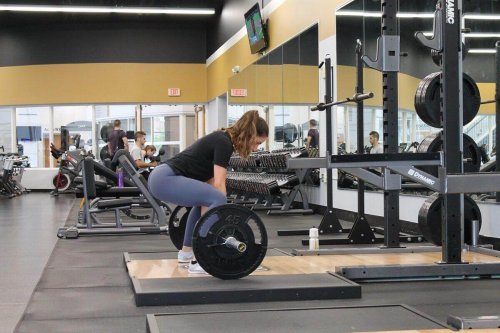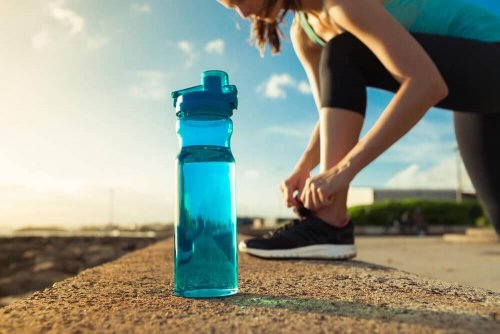The Best Diet for High-Performance Female Athletes


Reviewed and approved by the physiotherapist Sofía Quintana Alonso
Are you an athlete? Are you looking for a diet that will help you improve your physical performance and allow you to stay healthy? In this article, we explain what the best diet for high-performance female athletes is.
The Sports Medicine Center of the Ministry of Education, Social Policy, and Sports of Spain, in their guide “Food, Nutrition, and Hydration in Sports”, stated that it doesn’t matter if a person trains properly if they don’t follow a proper diet.
The guide explains that high-performance athletes must follow a correct and balanced diet before, during, and after completing any competition. This is essential to improved performance.
Your Body Needs Energy

To perform optimally, your food intake must cover your caloric expenditure. Similarly, this will help you maintain an adequate body weight. For this reason, you should follow a balanced diet that contains a variety of foods.
They’ll provide the nutrients, proteins, minerals, and energy you need to be able to perform. In addition, you should also adapt your diet to your calorie requirements.
In this sense, each athlete’s nutritional requirements should also be taken into account. They must be adapted to their age, sex, body composition, training duration, intensity and type of exercise, and ambient temperature, among others.
Take a look at this article: 5 Protein Shakes that You Should Include in Your Diet
What Is the Best Diet for High-Performance Female Athletes?
The Pennington Biomedical Research Center in Baton Rogue, Louisiana recruited seven high-performance female athletes to carry out a study. Its goal was to see how a diet moderate in fats affected these participants’ physical recovery. The variables were:
- A moderate diet, where 35% of energy came from fat.
- A diet high in carbohydrates, where only 10% of the energy was obtained from fats.
The results showed that, after completing the physical activity, intramuscular fats (IMTG) returned to normal after 22 hours with a diet moderate in fats.
On the other hand, the IMTG in women who followed a diet high in carbohydrates didn’t re-stabilize, not even after over 70 hours of physical activity. This showed that high-performance female athletes should follow a diet rich in fats.
Fear of increasing their body mass

It’s worth mentioning that these reserves will be spent depending on the duration and intensity of the athlete’s training. If they exercise for over two hours, their intramuscular fats can be consumed by up to 70%.
In this sense, a study from the clinical research department of the University of Bern in Switzerland suggests that between 35 and 40% of the total calories athletes consume should come from fat, specifically those that are monounsaturated and polyunsaturated. This is because they facilitate the increase of fat-free tissue (FFT).
Now, if you’re an athlete, you have to be aware that your fat intake should never be below 15 percent.
What You Should Eat
It’s essential to eat healthy foods, do it often, and hydrate properly to ensure maximum physical performance. For that reason, a diet for high-performance female athletes should include:
Carbohydrates
They’re the muscle’s main fuel throughout physical training. Therefore, it’s crucial for athletes to consume a diet high in this macronutrient, which provides between 60 and 65% of an athlete’s total daily energy.
We recommend consuming complex or slow-release carbohydrates such as flour, rice, pasta, corn, bread, and oats. When it comes to legumes, opt for lentils, beans, and chickpeas.
Fats
They’re an essential energy source. Between 20 and 30% of the calories an athlete consumes should come from fat. If you increase this percentage, you could be decreasing the intake of other foods you need. A lower ratio might lead to a deficiency of fat-soluble vitamins (A, D, E, and K) and essential fatty acids.
Protein
Athletes should consume 12 to 15% protein. You can meet this percentage by consuming eggs, meat, fish, and dairy products.

This article may also interest you: What is Muscle Hypertrophy?
Micronutrients
The diets of high-performance female athletes diet should be varied, balanced, and rich in plant foods. These are the ones that provide the most vitamins and minerals that are essential for our body because our body can’t produce them on its own.
Female athletes also have to eat four to five meals during the day in order to best distribute the energy they require. For this, you have to take into account your physical training schedule, since it’s advisable to consume food a few hours before you start and complete it.
You can divide your daily energy intake as follows:
- Breakfast: 15-25%
- Lunch: 25-35%
- Snack: 10-15%
- Dinner: 25-35%
In any case, seek professional advice if you have any doubts. They’ll be able to design a personalized plan for you.
All cited sources were thoroughly reviewed by our team to ensure their quality, reliability, currency, and validity. The bibliography of this article was considered reliable and of academic or scientific accuracy.
- Larson Meyer E., Newcomer BR., Hunter GR., Influence of endurance running and recovery diet on intramyocellular lipid content in women: a 1H NMR study. Am J Physiol Endocrinol Metab, 2002.
- Gunton JE., Girgis CM., Vitamin D and muscle. Bone Rep, 2018. 8: 163-167.
- Landi F., Calvani R., Tosato M., Martone AM., et al., Protein intake and muscle health in old age: from biological plausibility to clinical evidence. Nutrients, 2016.
This text is provided for informational purposes only and does not replace consultation with a professional. If in doubt, consult your specialist.








